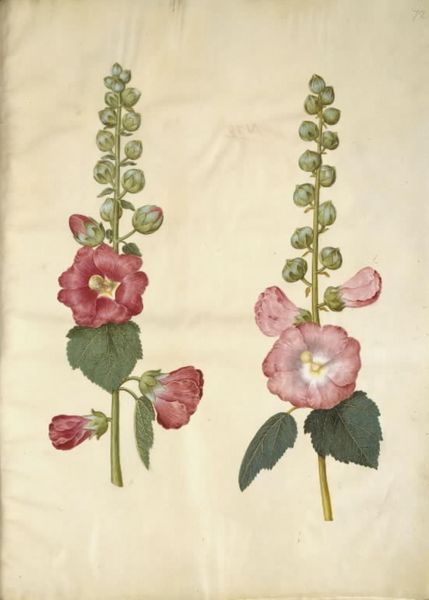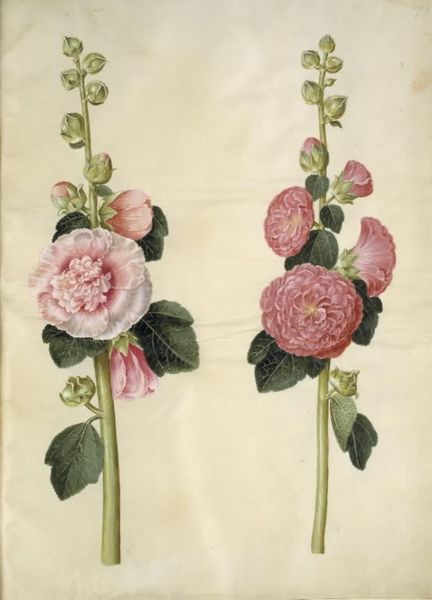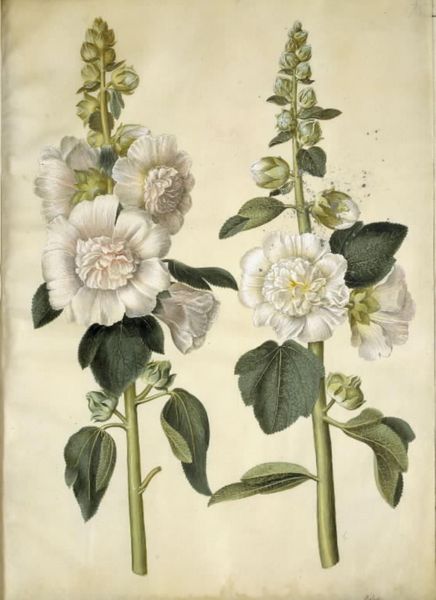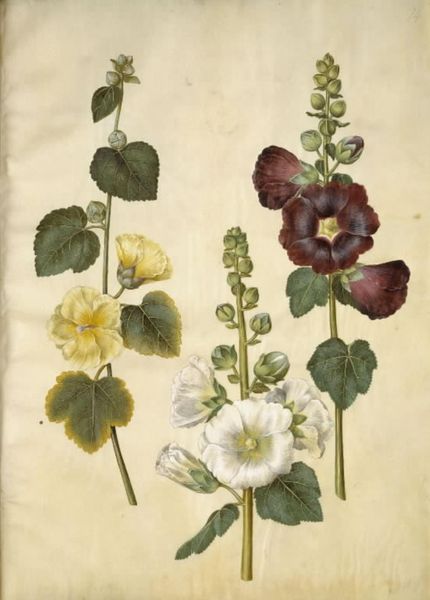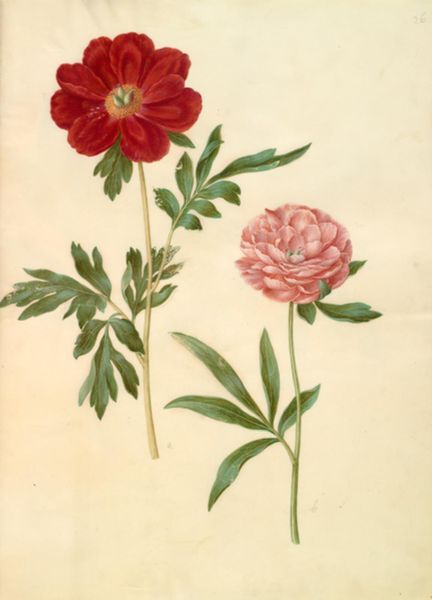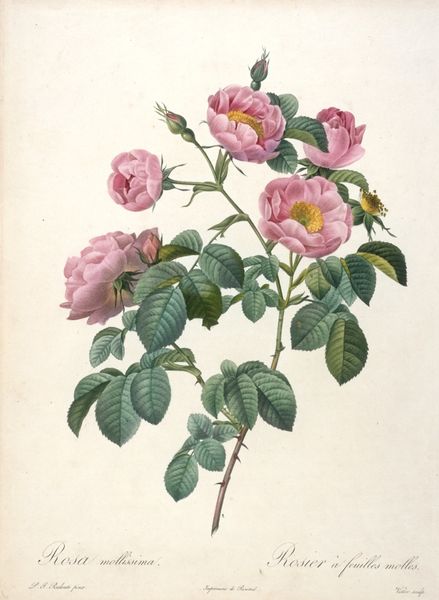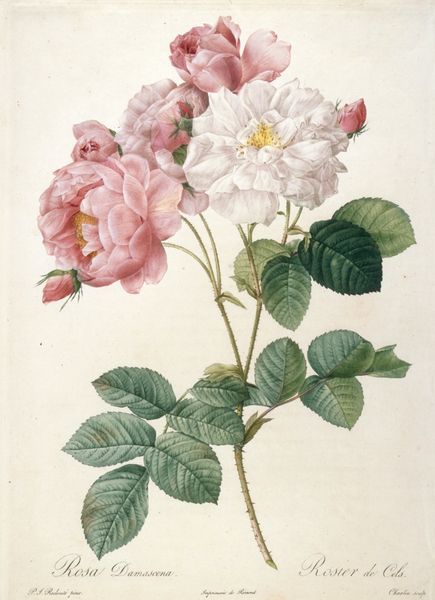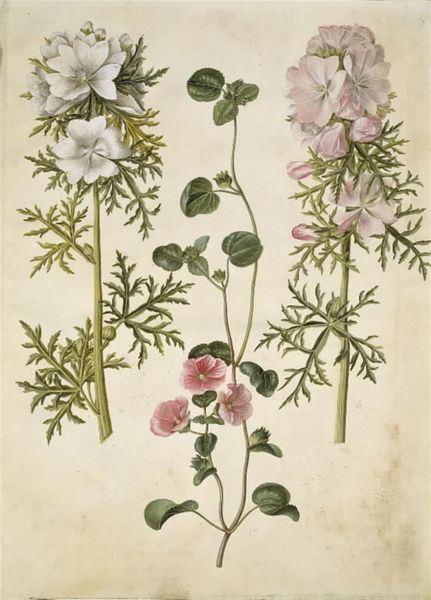
drawing, gouache, watercolor
#
drawing
#
water colours
#
gouache
#
watercolor
#
watercolour illustration
#
botanical art
#
realism
Dimensions: 505 mm (height) x 385 mm (width) (bladmaal)
Editor: Right now we’re looking at "Alcea rosea (have-stokrose)" by Hans Simon Holtzbecker, painted between 1649 and 1659. It's currently housed at the SMK - Statens Museum for Kunst. It appears to be executed with watercolors and gouache. I'm immediately struck by the scientific precision, but I wonder, what context informs the creation of botanical art like this during that time? Curator: It’s interesting that you say "scientific." This period marks a crucial moment in the relationship between art and natural science. Botanical illustrations became incredibly valuable, not merely as aesthetic objects, but as tools for documenting and classifying the natural world. Consider the rise of colonial exploration. What role might these images play in the context of global exchange and power? Editor: So, it's about more than just pretty flowers? The illustrations were tools used to catalogue new species being brought back to Europe, demonstrating knowledge and, frankly, ownership of those discoveries. Curator: Exactly. And who was commissioning and consuming these images? Were they widely available, or restricted to elite circles? Think about the socio-political power associated with owning and controlling information, especially about valuable plant resources like spices and medicines. Editor: So the distribution and audience of this image might suggest certain levels of access to power? Curator: Precisely! It speaks volumes about the politics of knowledge in the 17th century. Also, observe the level of detail in the rendering. It’s meticulous, almost hyper-real. What does that level of detail communicate to its intended audience? Editor: It highlights accuracy, creating the impression of objective truth... Even though artistic license is still at play in terms of composition. I never considered botanical illustrations as enmeshed within structures of power! Thank you. Curator: It's crucial to recognize art's embeddedness in social structures, so it goes far beyond the purely aesthetic appreciation.
Comments
No comments
Be the first to comment and join the conversation on the ultimate creative platform.
